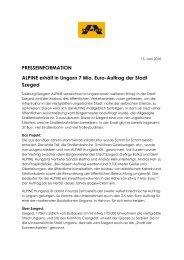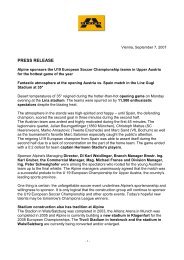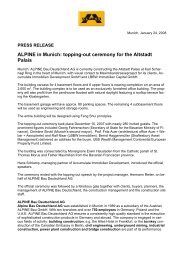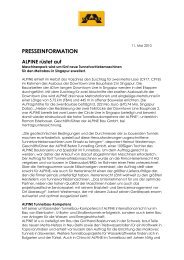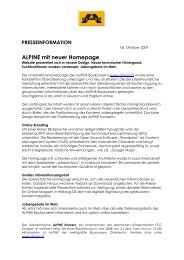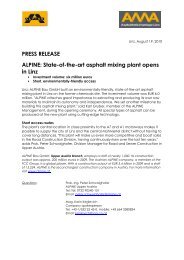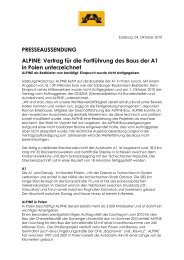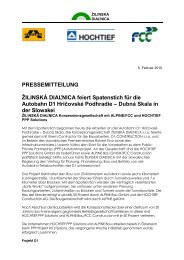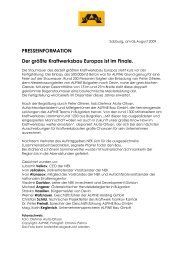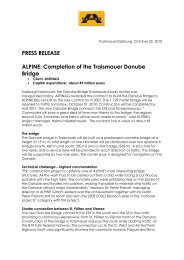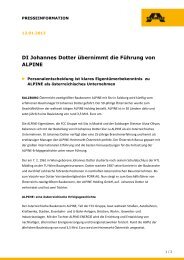Hydropower stations
Hydropower stations
Hydropower stations
You also want an ePaper? Increase the reach of your titles
YUMPU automatically turns print PDFs into web optimized ePapers that Google loves.
06<br />
Power Station Construction<br />
Basochhu, Lower Stage<br />
The intake is designed according to to the<br />
Tyrol Weir system. Several underground ducts<br />
were constructed for the power station using<br />
conventional excavation methods (NÖT) with a<br />
diameter from 1.6 to 3.6 m.<br />
Kopswerk II – Contract Section 3<br />
The building work for the pumped storage<br />
power station Kops II consisting of three contract<br />
sections. It uses the existing Kopsee (lake) as a<br />
headwater reservoir and the existing equalising<br />
reservoir Rifa as the tailwater reservoir: 5.5 km<br />
pressure shaft, 1.1 km long pressure shaft and<br />
surge tank, underground power house and tailwater<br />
duct – for which ALPINE was responsible.<br />
The pressure line has a length of 2,095 m and<br />
the power house has a building volume of<br />
8,000 m³.<br />
SPECIAL FEATURES<br />
Two caverns were excavated from the<br />
mountain. The machine cavern houses the<br />
pressure stage pump, the hydraulic<br />
start-up converter, motor generator set<br />
and pelton turbines. The second cavern<br />
houses the transformers.<br />
The tailwater duct leads from the power<br />
house to the Rifa reservoir. This bus duct<br />
is responsible for the discharge into the<br />
tailwater reservoir and for the return flow<br />
of the water during pump operation.<br />
HYDROPOWER STATION<br />
BHUTAN<br />
Output after extension: 48 MW<br />
Turbine output 50 MW<br />
Head: 475 m<br />
Water quantity after exten.: 5.0 m³/sec<br />
Construction period: 2002 – 2005<br />
Order value: € 9.5 million<br />
Part of the consortium: 30.4 %<br />
Difficult geological conditions<br />
during the underground construction<br />
of the buildings in<br />
the Himalayas gneiss.<br />
UNDERGROUND HYDROP. STATION<br />
AUSTRIA<br />
Construction method: Conventional<br />
excavation (NATM), micro tunnelling<br />
Output after extension: 150 MW each<br />
Machine sets: 3 vertical shafts<br />
Construction period: 2004 – 2007<br />
Order value: € 35 million<br />
Part of the consortium: 25%<br />
With more than 113,000 m³<br />
of excavation, the machine cavern<br />
is one of the largest rock-cavity<br />
structures in the world.



